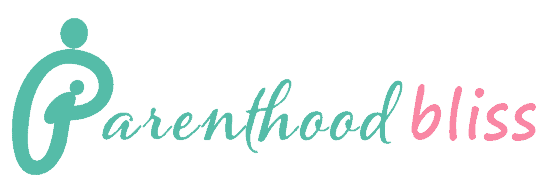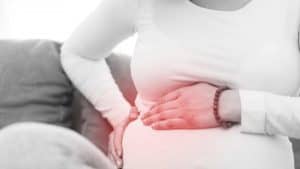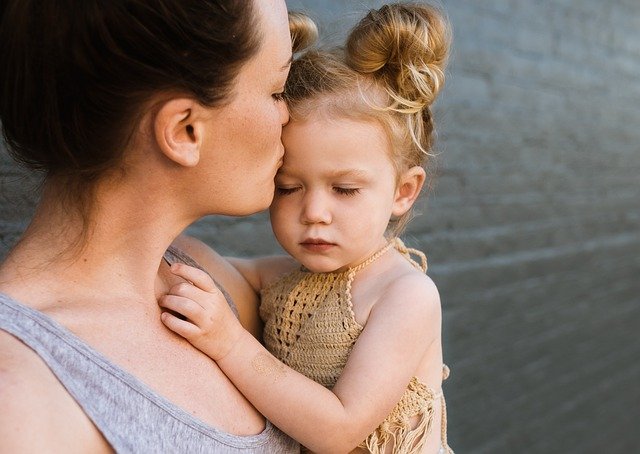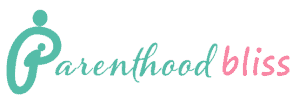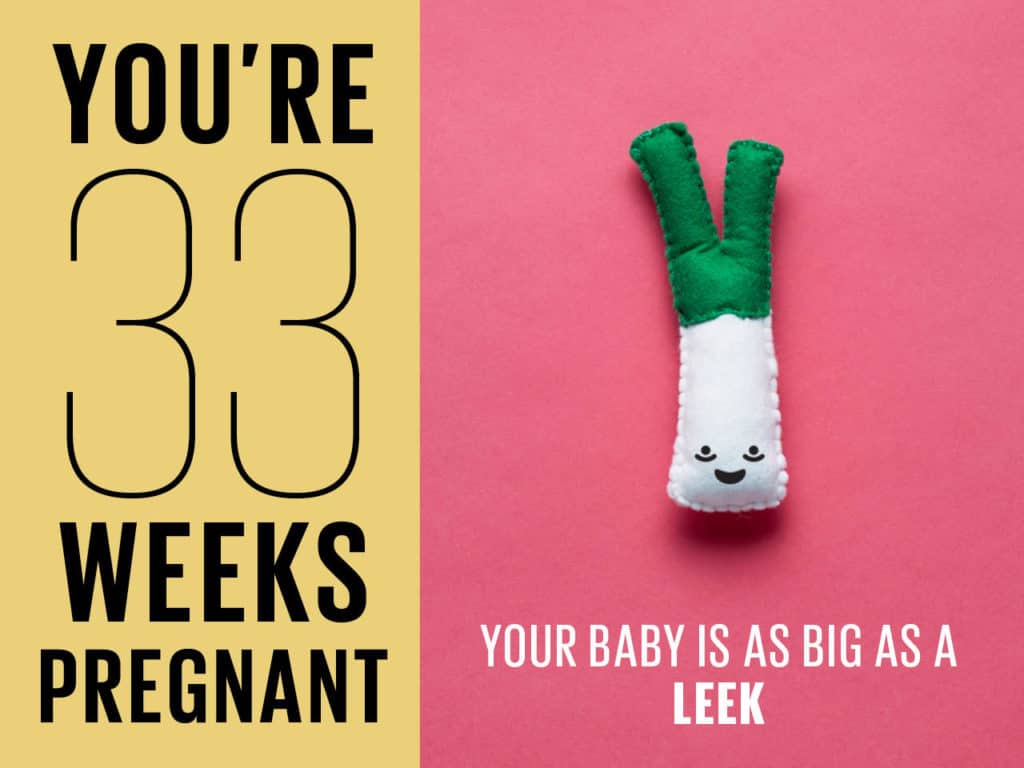
Table of Contents
At 33 weeks pregnant a baby develops hard bones, on the other hand, the mother may seem to forget a lot of things, which is common. The baby, in the 33rd week, will measure 17.2 inches and weigh 4.2 pounds. To put it in perspective, it is about the size of a lunch box. Isn’t this a great fact?
So what else is happening to the baby in the 33rd week of pregnancy?
1. Hard bones
The bones of the baby start to harden up, so the skull is still soft allowing the head to move. This is for them to be able to move through the birth canal or the vagina while the momma bear gives birth. The babies have soft spots called the fontanelles, that is placed in between the parts of their skull that will eventually close in a couple of years.
2. Baby fat
The baby starts to chub out while fat adds to their arms and legs. This makes the little one look extra adorable and helps them regulate body temperature during the early week’s post-birth.
3. Peach fuzz
In this week, the soft layer of the baby’s hair known as lanugo starts to fall. However, there might be some that may be left back on the baby’s shoulders or back at birth.
4. Immune system
The baby, in the 33 weeks pregnancy, gains antibodies from the mother’s body to develop their immune system. This helps them fight the germs as they reach the outside world.
What happens to the mother’s body in the 33 weeks Pregnancy?
With the due date just a few weeks apart, the mother will go through changes from discharge to experiencing the Braxton Hicks contractions. In other words, it helps the mother prepare for labor.
Here’s what is happening to a mother’s body in the 33rd week of pregnancy-
1. Overheating
In the 33 weeks pregnant, the baby starts to radiate body heat. Most mothers have higher skin temperature in the third trimester which is the reason for most mothers feeling overheated.
2. Vaginal discharge
Vaginal discharge is due to the increase in the estrogen levels and is very common in pregnant mothers of 33-weeks. However, be aware if you see some streaks of blood or the discharge is gelatinous, like a jellyfish as it could be a mucus plug that is an early sign of labor. On the other hand, if it’s clear and a thin fluid, that could be amniotic fluid, so call your doctor immediately.
3. Braxton Hicks contractions
As your body prepared for childbirth, in 33 weeks pregnant , the mother may experience the braxton hicks contractions tightening the belly irregularly. This is not equivalent to a normal contraction, so be hydrated to prevent the braxton hicks contractions.
4. Carpal tunnel
In the 33 weeks pregnant mothers retain a certain fluid that causes swelling, putting pressure on the nerve in and around the wrist. This causes numbness and/or a tingling experience in the hand called carpal tunnel syndrome. Talk to your doctor if it is a late pregnancy, as the carpal tunnel could worsen but would go away postpartum.
5. Baby brain
Don’t worry, this doesn’t mean memory loss. You just have a lot on your mind to keep everything noted. This could either be due to the lack of sleep, stress, or even moody. Mothers need to be kind to themselves and take a rest whenever possible.
6. Sex and contractions
When the doctor gives you a green signal, it is completely ok and safe to have sex until the end of your pregnancy. However, an orgasm could give you contractions, so do not freak out, it’s normal.
33 weeks pregnant symptoms not to ignore
While many symptoms during pregnancy are common and expected, some may indicate potential complications and should not be ignored. If you’re 33 weeks pregnant, pay attention to the following symptoms and seek medical attention if you experience them:
1. Vaginal Bleeding:
– Any vaginal bleeding, especially if it is heavy or accompanied by abdominal pain, could be a sign of a serious issue and requires immediate medical attention.
2. Severe Abdominal Pain or Cramping:
– Intense abdominal pain or cramping may be a sign of preterm labor or other complications. Contact your healthcare provider if you experience severe discomfort.
3. Sudden or Severe Swelling:
– While mild swelling is normal in pregnancy, sudden or severe swelling, particularly in the hands and face, may indicate preeclampsia, a serious condition that requires prompt medical evaluation.
4. Significant Change in Fetal Movements:
– If you notice a significant decrease in your baby’s movements, contact your healthcare provider. Changes in fetal activity can sometimes signal potential issues.
5. Severe Headache or Vision Changes:
– Persistent severe headaches or changes in vision could be a sign of preeclampsia. These symptoms should be evaluated by a healthcare professional..
6. Persistent Nausea or Vomiting:
– While nausea and vomiting are common in pregnancy, persistent or severe symptoms may indicate conditions like hyperemesis gravidarum, which requires medical attention.
7. Fluid Leakage:
– If you experience a sudden gush or a continuous trickle of fluid from the vagina, it could be a rupture of the amniotic sac, and you should seek immediate medical assistance.
8. Shortness of Breath:
– While it’s common to experience shortness of breath as the uterus expands, sudden or severe difficulty breathing may signal a problem and should be addressed promptly.
9. Chest Pain:
– Chest pain or discomfort should be evaluated promptly, as it could be related to cardiovascular changes during pregnancy.
10. Signs of Infection:
– Symptoms such as fever, chills, pain or burning during urination, or any other signs of infection should be reported to your healthcare provider.
11. Persistent Itching:
– Severe and persistent itching, especially on the hands and feet, could be a sign of a liver condition called cholestasis, which may require medical attention.
It is best to always prioritize open communication with your healthcare provider. If you experience any unusual or concerning symptoms, contact your healthcare team promptly. Regular prenatal check-ups are essential, but don’t hesitate to seek immediate attention if you notice any changes that cause concern.
What would your belly look like in the 33 weeks pregnancy?
At week 33, weight gain still seems to be an ongoing change with at least a pound per week till the due date. By this week, mothers must have grown about 22 to 28 pounds in total, so they might feel a bit heavy and must have slowed down.
The levels of amniotic fluid increase drastically as the baby grows. On the other hand, if you feel the baby’s kicks growing shaper they might only be due to the less padding of the fluid. In addition to this, mothers need to pay attention to the movements of the baby, and in case they find a change, to contact the doctor immediately
For some brownie points, here is a quick checklist to get you sailing through the 33rd week of pregnancy:
- Spend the whole maternity leave recovering from childbirth and bonding with the little one. Do not over-stress over what will happen as you get back to work.
- Take time out to finalize childcare plans.
- Take care of yourself along with your baby. Get comfortable slippers to cure swollen feet, get rest when you can, eat healthily, and try taking some time out for yourself whenever possible.
- Be prepared with postpartum preparations irrespective of whether you give birth in a hospital or a birth clinic. Have a home bed ready with a bed pad to let out the post-birth bodily fluids and keep the sheets clean from unexpected leaks while sleeping.
- Consider purchasing a wedge pillow to help prevent heartburn during the third trimester.
To Conclude:
1. Embrace the inner penguin’s mother, waddle!
2. Schedule an appointment for a group B Strep test, between weeks 35-37 of your pregnancy.
3. Figure out the childcare situation in the 33rd week of pregnancy to be well prepared as the baby comes along. How will it be? Daycare? Nanny? The Family?
4. Have you started packing yet? This week is the best time if you haven’t already.
